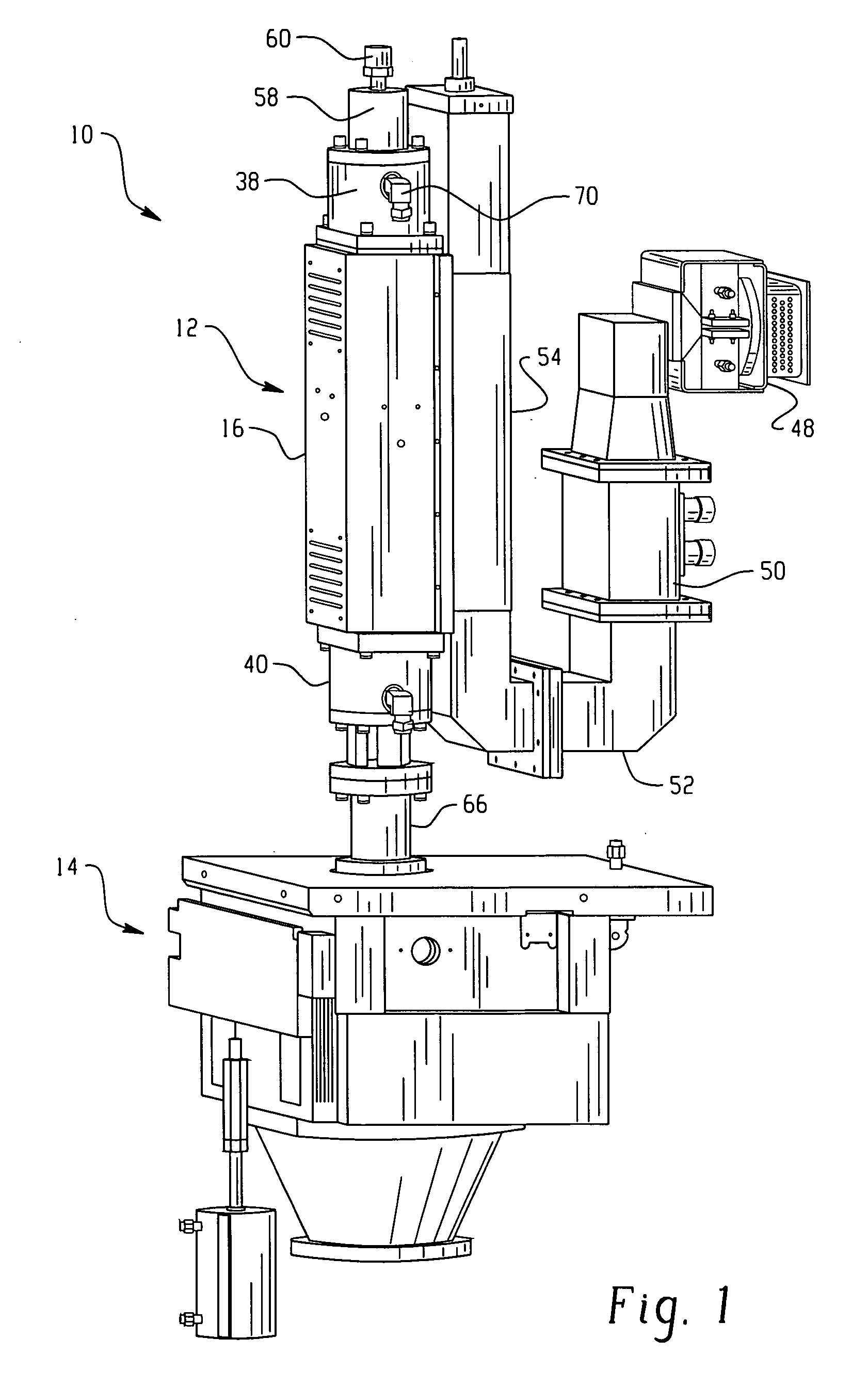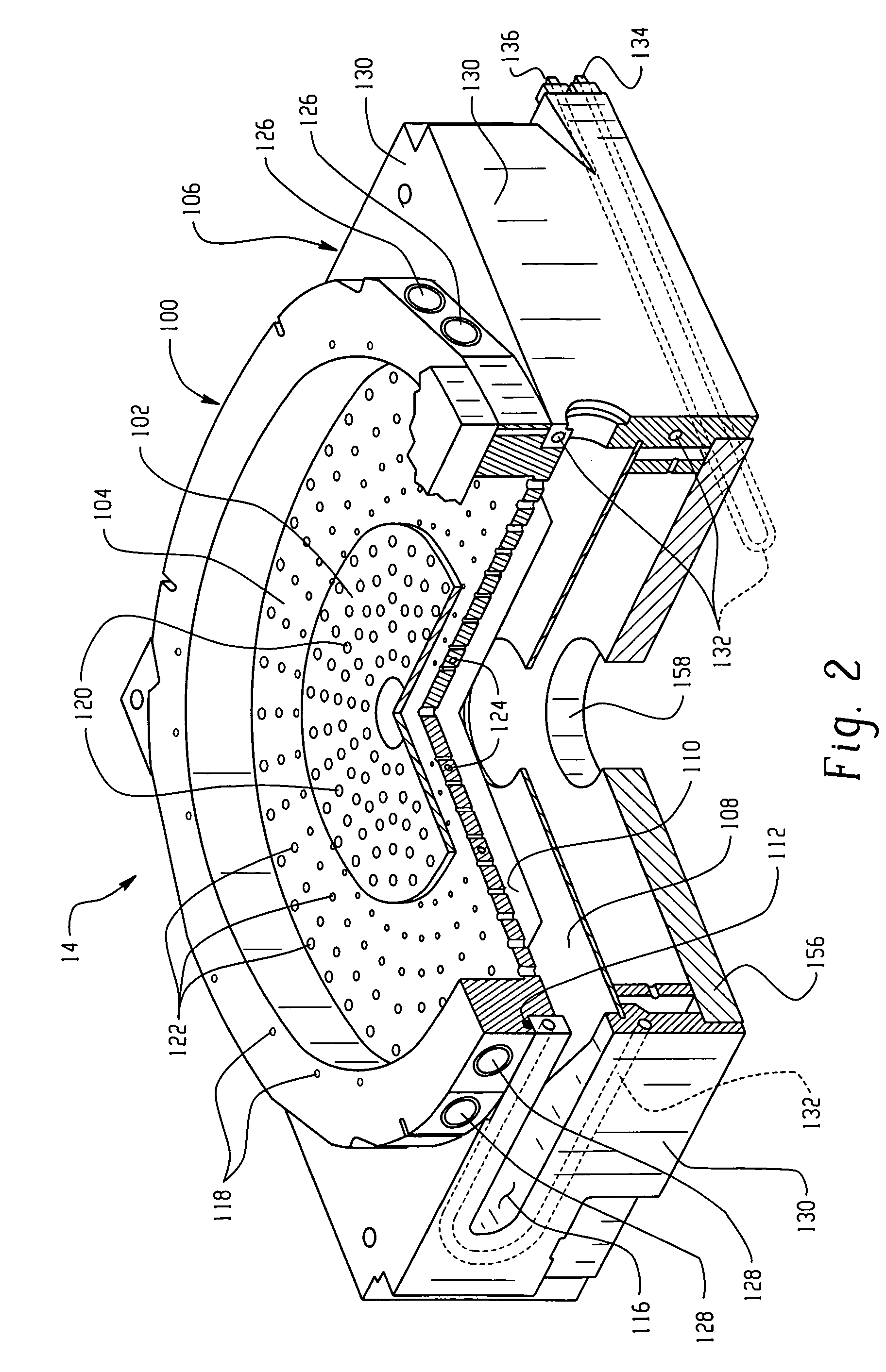Apparatus and plasma ashing process for increasing photoresist removal rate
a technology of ashing process and plasma, which is applied in the field of plasma ashing process, can solve the problems of limiting the overall chip speed, increasing the dielectric constant, and using gas sources that have proven detrimental to substrates containing low k dielectrics, and achieve the effect of reducing the temperature of the upper baffle pla
- Summary
- Abstract
- Description
- Claims
- Application Information
AI Technical Summary
Benefits of technology
Problems solved by technology
Method used
Image
Examples
example 2
[0063] In this example, a dual baffle plate assembly having an upper and lower plate spaced apart by about 0.5 inch was employed, where the upper quartz baffle plate was configured with the cooling gas conduit in the manner shown in FIG. 7. As previously discussed, the cooling gas conduit serves to both cool the upper baffle plate in the baffle plate assembly and provide a counter-flow to the plasma impinging on the upper baffle plate from above to prevent excessive heating. Helium gas was used to cool the upper baffle and was introduced at flows ranging from 0 to 440 sccm.
[0064] Wafers were coated with about 8,200 angstroms of Shipley UV-6 photoresist, baked, and the thickness measured. The coated wafers were then processed in the Axcelis Technologies asher as in Example 1. Flow rates were 10,000 sccm of 4% hydrogen in helium and 100 μL / min (microliters per minute) of oxygen. The runs differed only in the amount of counter-flow cooling helium supplied to the baffle plate. The thic...
example 3
[0065] In this example, a comparison of two baffle plate designs were examined in the ES3Lk plasma asher commercially available from Axcelis Technologies, Inc. The plasma asher included a dual baffle plate assembly having an upper and lower plate separated by about 0.5 inch. In one comparative configuration, the upper baffle plate was constructed of quartz and was supported by 3 quartz legs resting on the lower baffle plate. The second configuration employed the use of a thermally conductive material. In this configuration as shown in FIG. 8, the upper baffle plate is formed of an aluminum plate suspended 0.5 inches from the lower baffle plate. Suspension is achieved by the use of mounting hardware formed of thermally conductive aluminum standoffs and appropriate connecting bolts to fixedly attach the upper baffle plate to the water-cooled lid of the plasma asher.
[0066] Wafers were coated with about 8,200 angstroms of Shipley UV-6 photoresist, baked and the thickness measured. The ...
PUM
 Login to View More
Login to View More Abstract
Description
Claims
Application Information
 Login to View More
Login to View More - R&D
- Intellectual Property
- Life Sciences
- Materials
- Tech Scout
- Unparalleled Data Quality
- Higher Quality Content
- 60% Fewer Hallucinations
Browse by: Latest US Patents, China's latest patents, Technical Efficacy Thesaurus, Application Domain, Technology Topic, Popular Technical Reports.
© 2025 PatSnap. All rights reserved.Legal|Privacy policy|Modern Slavery Act Transparency Statement|Sitemap|About US| Contact US: help@patsnap.com



